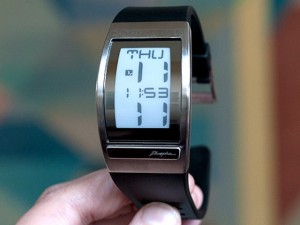Long web page addresses are a pain to type and remember – we show you how to make them more manageable
Some web page addresses (sometimes called URLs or Uniform Resource Locators) are easy to remember – www.computeractive.co.uk is a good example.
However, by the time you’ve followed a few site links to an interesting article or software download, simple and straightforward addresses can easily grow to ones that are impossible to remember and inconvenient to use.
Computeractive has its own URL shortening service, www.snipca.com, where we ‘snip’ long ‘CA’ addresses. The most important thing to remember about shortened addresses is that they must be entered in the address bar of the web browser, and not a search tool such as Google.
Only Computeractive can shorten long addresses with Snipca, but there are plenty of free URL shorteners that you can use. In this guide we’ll explain what they are, how to use them and the pitfalls to avoid.
Finding a long URL
We’ll begin by finding a long URL. Launch a web browser and go to the Ebay website. When the site loads select Categories and then Sporting Goods, scroll down the list and click Fishing. When the next page loads, select any item for sale and then click on it. Now look at the Address or Location line in the web browser. The nice, neat www.ebay.co.uk has become an enormous, incomprehensible address that makes sense to a computer but not to a human. Right-click on the text in the Address/Location bar and choose Copy from the pop-up menu. Open a word processor such as Microsoft Word or Wordpad, right-click anywhere in the empty page and choose Paste from the pop-up menu. The URL for our particular Ebay item was 155 characters long.
Long URLs like this often ‘break’ when pasted into email messages, because many mail programs automatically insert carriage returns after a certain number of characters. This cuts the URL into two or more parts and means that it won’t work when clicked.
Shortening a long URL
There are lots of URL-shortening services but we’re going to use the one we consider to be the best: Bit.ly. Open a new tab in your browser (in Internet Explorer, hold down the Ctrl key and press T) then click in the empty Address/Location line at the top, type in http://bit.ly and press Enter.
That enormous web address copied from Ebay should remain in the Windows Clipboard so right-click in the empty Shorten box and choose Paste. Then click the Shorten button. In our example, the result is a URL that’s 20 characters long.
Now hover the mouse pointer over the short URL and a Click to Copy button will slide into view – click it. The shortened URL is now in the Windows Clipboard ready for pasting wherever you want to use it. Below are some more tips on using Bit.ly.
Add the Bit.ly sidebar to Internet Explorer
1 Open a web browser and go to http://bit.ly. When the site loads, open the dropdown menu next to Tools on the right and choose the Bit.ly Sidebar and more option.
2 Scroll down to the panel labelled ‘Drag this to your browser…’, right-click on the actual bit.ly Sidebar link and choose Add to Favorites. Ignore any security warnings and click Add.
3 From now on, to shorten long URLs click the Favorites button, the Favorites tab and then Bit.ly Sidebar. A window will slide out with the shortened URL already in place.
Potential pitfalls
The only problem with shortened URLs is when one turns up in your inbox as part of an email, especially if it has been embedded into the message (for example, ‘to see this website click here’ where ‘here’ has been turned into a link).
Normally, when hovering the mouse pointer over a link like this, the email program will display the actual URL. This is a handy way to check whether a link is about to lead you to a scam website. But with a shortened link, it’s not possible to tell at a glance where it leads.
However, Bit.ly offers a simple solution. Copy the shortened URL and then paste (or type) it into the browser’s Address Location – don’t press Enter just yet. Instead, add a ‘+’ sign to the end of the URL and then press Enter. This will open the Bit.ly website and display both the shortened URL and the destination website.
Always think twice before you click links in email messages, even if they’ve come from people you know.
Short and sweet
When space is tight, URL shorteners such as Bit.ly offer a quick and free way to display long web page addresses. Be careful not to click short URLs if you’re unsure of the source and, if in doubt, preview the full address first. Also, try out a few services to see which one suits you best. Other options include http://goo.gl (from Google) and http://tinyurl.com – one of the earliest and most popular URL-shortening services.
Author : Rob Beattie




































